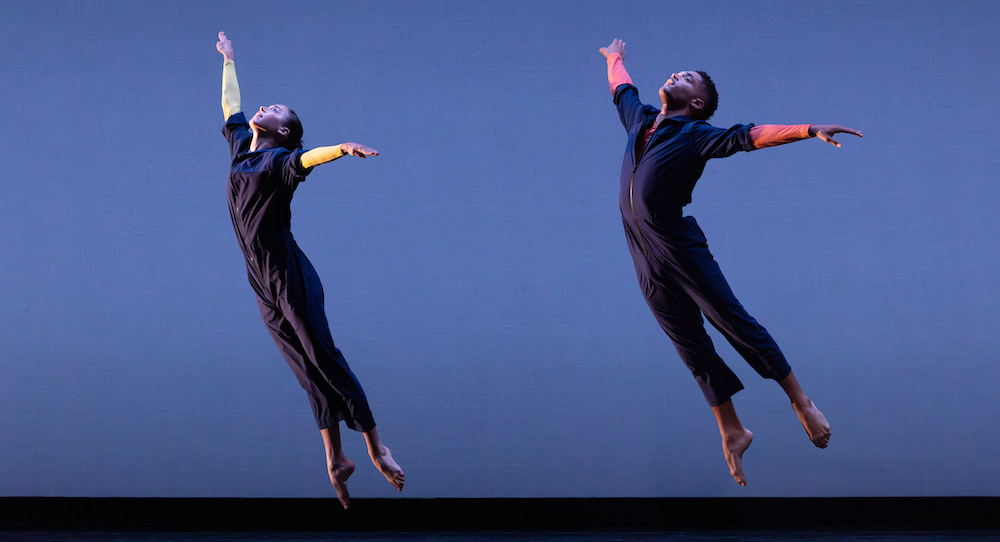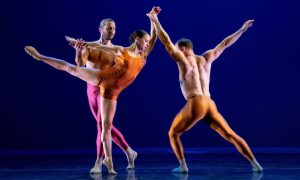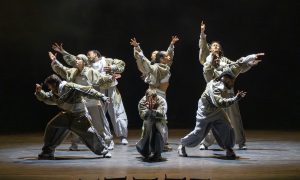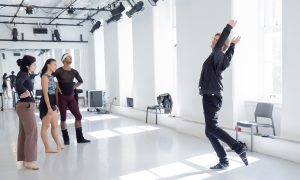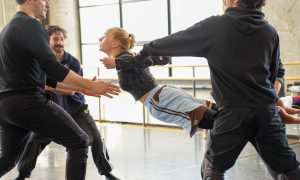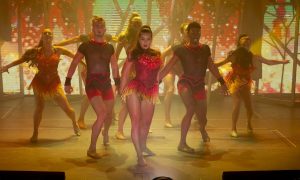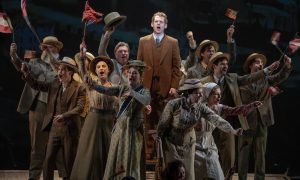Peter Jay Sharp Theater, New York, NY.
September 14, 2024.
The Juilliard School presented its first ever Fall Festival in September with live music, dance and theater performances over the course of the 10-day run. The festival provides an opportunity for young artists to present themselves both honoring classic works and pushing new boundaries of artistry.
Naturally, the talent pool for a school like Juilliard runs deep and was evident in the technical aptitude of all the dancers and musicians on stage. The night of September 14, entitled The New: Celebrating Charles Ives and American Experimentalism in Music, Dance and Drama, directed by Pam Tanowitz, hosted a whopping 16 different works and while all enjoyable, some of the dances and musical presentations flew by so fast, it was difficult to let the work sink in. That said, the quality of dance and music onstage bodes well for the future of both, once these artists explore more outside the confines of a university atmosphere.
The evening opened with John Cage’s 4’33” – although this reviewer missed it because there are two theaters with the same name in NYC, a fact I did not know until I went to the wrong one. That said, my 4’33” of the night consisted of a much different expression than the one on the program…instead I heard, “Stand clear of the closing doors, please” from the train conductor, not the room sound I imagined to be the case in the theater.
Overall, the presence of musicians on the stage with the dancers (for the pieces with live music), stood out as a poignant reminder of the relationship between music and dance. This interplay between artists is often relegated to a more unseen relationship with musicians in the pit and the dancers onstage, but seeing both artists impacted the richness of the works and brought a sense of grounded humanity to the performances.
Also of note were the two pieces with female artists, Argoru 1 (for piano and a dancer) and Two Little Flowers (for piano and soprano). Watching these women support each other in their art and on the stage was a pleasant experience to think about the possibilities of how their careers could inspire young girls to follow their own dreams.
The night also included two pieces entitled Lobby Dance and Scrim Dance, with dancers making their way back to the stage after intermission from the lobby in Lobby Dance (presumably – it was hard to tell where they started as I was in my seat), and prior to the last piece of the evening in Scrim Dance, which was something of a dancing parade in front of the closed curtain.
The night was a lot to take in, a cornucopia of art, but what tied it all together was the simple, yet stunning light design and color tones. The rich vibrancy of color, often paired with shadows and blacklight was like a distinct, but welcoming perfume – a sense that you barely notice, but something that enriches everything in the way art should. Sometimes you can’t explain it, but you know it made you feel something.
By Emily Sarkissian of Dance Informa.


